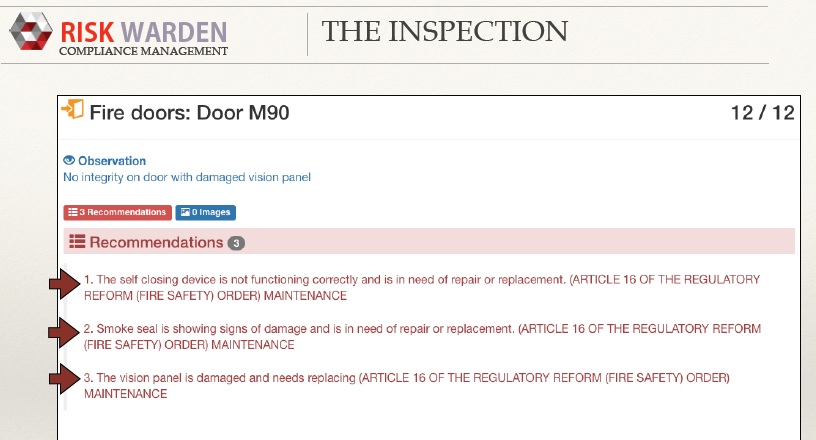“The NHS is considered to be pretty terrible at keeping pace with what needs to be done in terms of fire risks within their buildings.”
This worrying observation comes from of Colin Simpson, founding director of Risk Warden, a compliance management tool that will help hospitals, health centres and care homes to meet their obligations under current fire safety regulations.
Many hospitals, in particular, will not carry out proper risk assessments and very often they do not necessarily do all they are supposed to do
“Many hospitals, in particular, will not carry out proper risk assessments”, he said, “and very often they do not necessarily do all they are supposed to do.
“Once they have carried out one risk assessment they think they have discharged their responsibility and they are not adept at making improvements and meeting the regulatory standards in the same way a commercial organisation would be.”
This timely warning comes in the wake of the Grenfell Tower fire, which highlighted vulnerabilities in fire risk management, particularly in high-rise buildings, similar to many ward blocks within traditional district general hospitals up and down the country.
A legal responsibility
Every hospital is under a legal obligation to carry out regular fire risk assessments and to fix any problems these probes highlight.
But, in most hospitals, damaged and misused fire doors, faulty alarms, and issues with building work impacting on fire prevention strategies mean that, in the event of a blaze, buildings, and their occupants, could still be at risk.
Simpson explains: “Currently, hospitals will appoint a fire officer, or they will have one across a group of hospitals.
“They will be responsible for carrying out a risk assessment and this tends to be done on paper, very often with several reports or sheets clipped together. These are then ‘filed’ in a drawer or, in a small number of cases, electronically.
“Actions that need to be taken should be noted and any work carried out. However, with current systems how can we be sure who looks at it, who is responsible, and whether the work has been done?”
We know hospitals don’t have money and there are greater priorities in terms of patient care, but fire risk is important, assessments must legally be carried out, and we want to make it easier to do this
These concerns were the driving force behind the design of Risk Warden, a cloud-based open-protocol compliance management solution which enables organisations to effectively and comprehensively manage fire risk across single rooms, entire facilities, or across a number of buildings.
Template-driven, the system, which can also be adapted to cover gas, asbestos, security and other key compliance areas, can be tailored by an organisation to exactly reflect its regulatory responsibilities.
Importantly for the NHS, it also enables actions to be attributed to specific people and tracks whether they have been completed, if necessary escalating issues to designated senior managers. Simpson said: “The software has been developed in line with Health Technical Memorandum 05-01: Managing Healthcare Fire Safety, which sets out the responsibilities healthcare organisations have to protect their buildings and those using them.
“Risk Warden provides a visual model for compliance, with secure storage of all recorded date.”
With a 30-year background in the fire service, Simpson hopes the solution will be adopted across the NHS, ensuring all buildings are fit for purpose and continue to be improved and upgraded.
Managing risk
“It’s about collating all the data and highlighting actions that need to be taken, then, importantly, ensuring they are carried out,” he said.
“Risk Warden will issue reports and there is the option to link them to a whole series of actions. These are labelled imminent, important, or even advisory.”
He added: “All hospitals should have these reports, but increasingly we are finding that they do not.
The NHS is considered to be pretty terrible at keeping pace with what needs to be done in terms of fire risks within their buildings
“Risk Warden makes is easier to ensure the correct paperwork is in order and that a building meets fire regulations.”
For cash-strapped hospitals, the start-up costs associated with Risk Warden are relatively low and then, vitally, costs can be paid annually or monthly.
“We know hospitals don’t have money and there are greater priorities in terms of patient care, but fire risk is important, assessments must legally be carried out, and we want to make it easier to do this,” said Simpson.
“From a desktop anywhere you can call up all the data and manage the response.
“We are already seeing interest from hospitals and expect to be speaking with more as fire assessments are carried out in the wake of the Grenfell Tower incident.”

The system will send reminders and attribute a timescale to repairs and improvements
